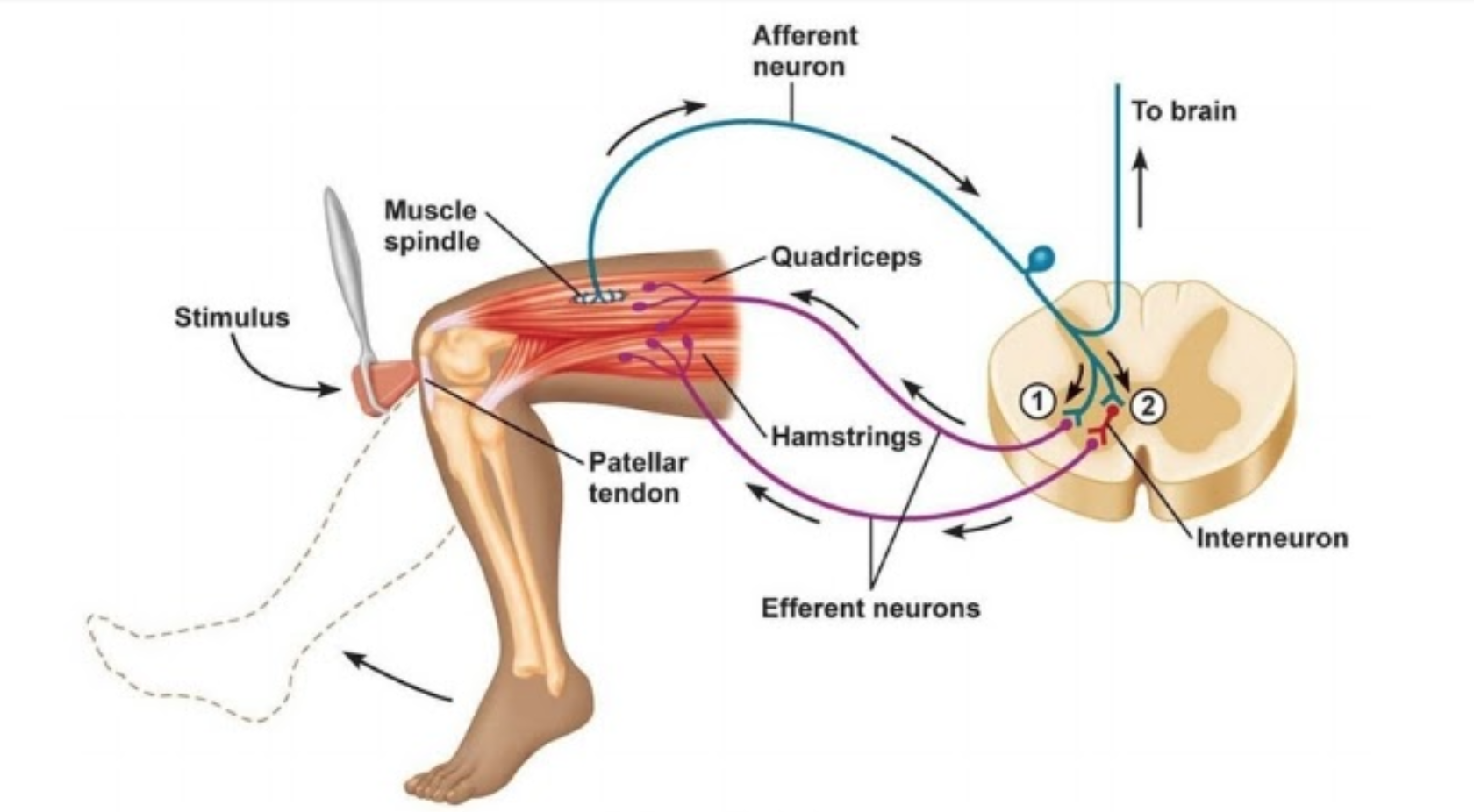What is the ‘stretch reflex’ in squatting? (Part 1)
Some time back while providing rehabilitation for a friend who had suffered a discogenic back injury while training for a powerlifting competition, I was faced with the question of where the stretch reflex should be felt at the bottom of the barbell squat. My friend struggled to feel the usual hamstring stretch that most of the lifting scene has recognized as the ideal muscle to elicit a stretch reflex from. Simultaneously, she complained of never feeling any muscle soreness in her glutes after a heavy squatting session and constantly felt the stretch and DOMS (delayed onset of muscle soreness) in her quadriceps instead. After much discussion to and fro, I decided to materialize my thoughts towards this conundrum. Based on the following concepts presented in this article, I was able to aid my friend back to squatting again without pain and I hope that this will help not just her but many others who battle with this issue.
The barbell squat is a movement that requires good strength of the torso and legs and yet demands the finesse of a dancer’s balance.
To be fully effective in the barbell squat, the stretch reflex must be utilized at the bottom of the squat. However, talking about the stretch reflex alone would be simply scratching the tip of an iceberg. Several mechanisms combine to create that safe ‘bounce’ out of the bottom of a barbell squat and are explained in the stretch—shortening cycle (SSC).
Understanding the stretch-shortening cycle
The SSC goes through 3 phases: eccentric, amortization and concentric phase. Each phase provides a
For full detailed explanation about the SSC, kindly refer to https://www.scienceforsport.com/stretch-shortening-cycle/
In summary, the SSC is comprised of 3 main mechanisms:
1) Storage of Elastic Energy (mechanical elastic properties of tendons/ ligaments)
2) Neurophysiology Model (the stretch reflex)
3) Active State (effect of loading muscles while lengthening)
Muscles are contractile tissues, meaning that they have the ability to lengthen and shorten. At the ends of all muscles are tendons which are non-contractile tissues. Unlike muscles, tendons contribute the the ability to store elastic energy like a bungee cord instead of being able to contract and generate force through a shortening mechanism. At the bottom of a well-executed squat, the quadriceps, adductors, calves and hamstring muscles are stretched and share the common ability to contribute to the ascent by storing elastic energy in their tendons.
A stretch reflex is a primitive response in the body akin to that of the pain reflex. This means that when a significant amount of stretching has occurred in a muscle, the stretch reflex kicks in subconsciously to create an involuntary contraction of the muscle involved. In short, the stretch reflex is a protective mechanism that can be utilized to further enhance the contractive ability of muscles.
Lastly, a muscle and its tendon lengthening under load (i.e. during the controlled descent of a squat) remains active by having the muscle contract eccentrically. Eccentric contractions stimulate greater cross-bridge formations which result in greater force production abilities during the concentric (contracting) phase/ ascent of the squat. Additionally, this results in a rigid muscle, allowing its tendons to bear load during the descent and contribute to the force production during the ascent.
In conclusion, all 3 phases of the SSC must occur in unison to enable each other.
What happens in squatting?
During the reversal point of the squat, one may be able to utilize the stretch reflex in any other muscle in the leg I.e. the calves, adductors or quadriceps, however, the hamstring is the ideal muscle to be engaged in the stretch reflex in the squat for a few basic reasons:
1) the hamstring is a two-joint muscle, acting on the pelvis and the knee joint enabling it extend (straighten) the hip and flex (bend) the knee actively when in the ascend and descend of the squat respectively;
2) the hamstring is predominantly a fast-twitch muscle link articles here and is suited for the explosive effect that the stretch reflex provides;
3) unlike the patellofemoral joint (knee cap) wherein there is an articular joint at the knee (contributed by the presence of the patella and the cartilaginous surface that it provides), the hamstring is not restricted in either ends of its tendinous origins and insertions by the presence of a cartilaginous joint within it.
This results in a muscle that is capable of taking immense amounts of weight in the SSC without worry of wear and tear in an articular joint. This being said, the hamstring is a muscle that is very prone to strains/tears when excessively loaded (think soccer / football players). The athlete with previous or ongoing tendon injuries should practice training the SSC with caution.
We now talk about how the hamstrings are engaged in a well executed double-legged barbell squat. To start off, we need to appreciate the role of the pelvis in the squat and how it does not just maintain a neutral lower back (lumbar spine) but also to allow for greater utility of the SSC.
The origins of the hamstring being at the ischial tuberosity of the pelvis mean that it lengthens when the pelvis is tilted anteriorly (as in leaning forward with a neutral lumbar spine or when arching one’s lumbar spine). As one descends in the squat, one’s knees bend (flex) and this provides a shortening effect to the hamstring where it inserts into the tibia. In summary, the hamstring may have no net change in length at the early descend of a squat aka Lombard’s paradox.
As one reaches depth where the thighs are parallel to the ground, due to the need to maintain forward trunk lean to balance the barbell over one’s mid foot, the amount of hip flexion (aka hip hinging or folding at the pockets) exceeds the amount of knee flexion due to anatomical reasons (there is a limit to how much ankle dorsiflexion is possible thus limiting how much one’s centre of gravity can be maintained over mid foot as greater knee flexion is allowed).
From this point, the hamstring begins to lengthen as the squat depth and degree of hip flexion increases simultaneously, reaching the point where no further lengthening of the hamstring is possible. Elastic energy in the hamstring and its tendons build up, triggering the stretch reflex. All this happens with the assumption that the lumbar spine remains neutral throughout the entire movement and optimal length-tension relationship is maintained.
Athletes who can sense the exact point at which the stretch reflex is engaged can explosively reverse the movement at the right time and extend the hips and knees forcefully back into extension with less of a grind.





